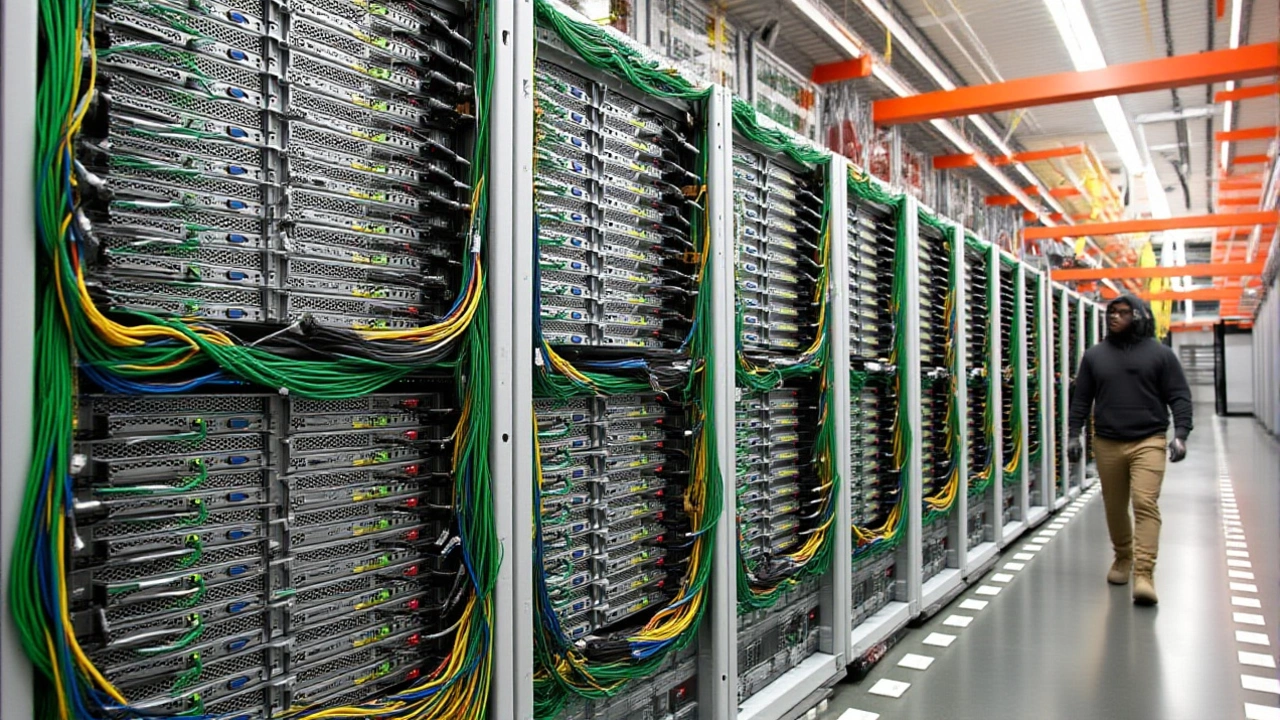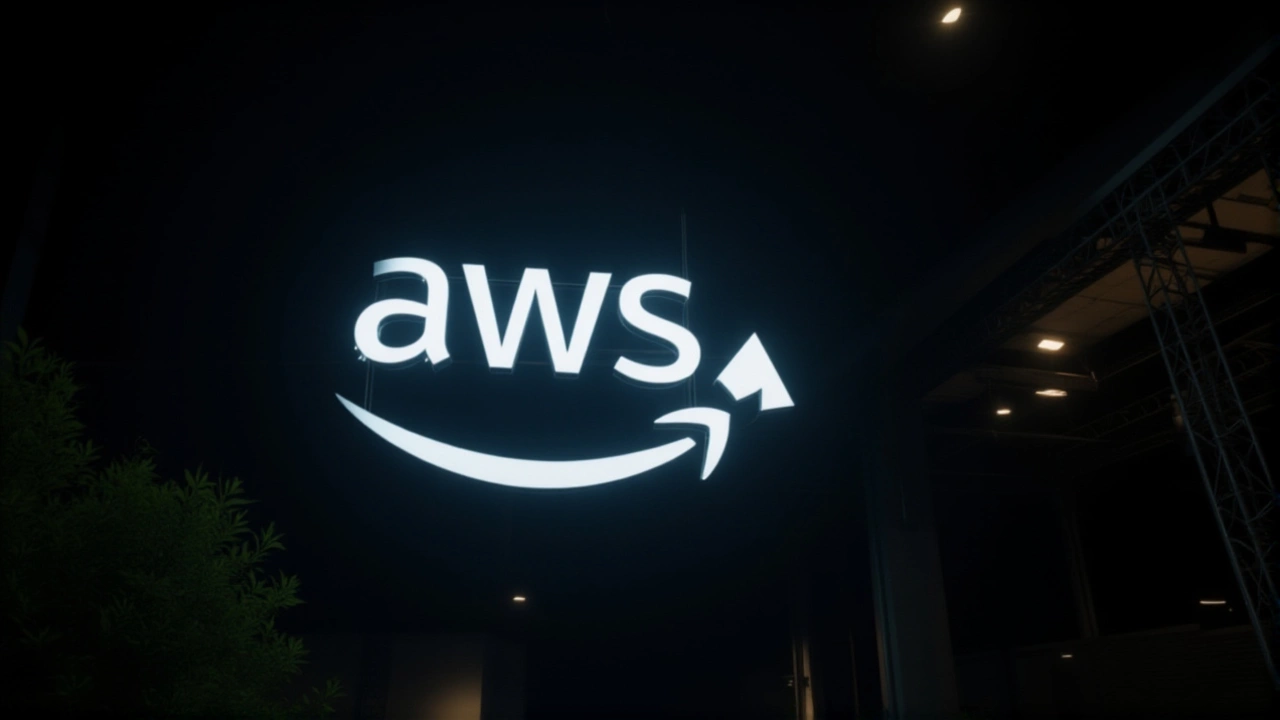When Amazon Web Services went dark on Monday, October 20, 2025, the ripple effect was felt from a teenager gaming in Berlin to a business conference in Chicago. The failure struck the US‑East‑1 region – the massive North Virginia data‑center hub that underpins everything from e‑commerce to AI chatbots – and left a litany of high‑profile services either partially or entirely inaccessible.
Here’s the thing: the AWS Health Dashboard was the only source confirming that the outage was still "under investigation" by the Amazon engineering teams. No ETA was given, and the clock kept ticking while users worldwide tried to log in, stream, or send a simple message.
What Went Wrong in North Virginia?
According to the dashboard, the issue is confined to the US‑East‑1 region, officially known as the North Virginia data‑center cluster. That area is one of Amazon’s oldest and most heavily trafficked zones, hosting a disproportionate share of the internet’s traffic. When a single rack or power feed falters there, the fallout can cascade across dozens of services.
Amazon has not yet released technical details, but past incidents suggest possibilities ranging from network misconfigurations to cooling‑system failures. The fact that the same region has been the epicenter of outages in 2020, 2021, and 2023 makes the pattern hard to ignore.
Services That Felt the Pain
- Amazon.com, Inc. – the flagship e‑commerce storefront went offline for hours, halting countless transactions.
- Alexa – Amazon’s voice assistant stopped responding to commands in many households.
- Snap Inc. (Snapchat) – users saw loading screens when trying to open chats or stories.
- Epic Games, Inc. (Fortnite and Epic Games Store) – matchmaking and store downloads stalled.
- Roblox Corporation – many creators reported server timeouts.
- Signal – end‑to‑end encrypted messages queued up with no delivery.
- Slack Technologies (a Salesforce subsidiary) – workspaces experienced lag or total loss.
- Reddit, Inc. – community threads froze mid‑scroll.
- Canva – graphic designers were stuck on the upload screen.
- Airtable – collaborative databases showed error messages when saving.
- OpenAI, LLC (ChatGPT) – the AI chatbot returned a generic outage notice.
- Perplexity AI, Inc. – search queries timed out.
The list reads like a who's‑who of modern digital life, which explains why the outage felt like the internet itself was taking a breath.
Why This Region Is a Single Point of Failure
North Virginia isn’t just any data‑center; it’s the backbone for a huge slice of the cloud market. The region houses tens of thousands of servers that power everything from Netflix streams to government document verification tools. When that hub hiccups, the effect is global because many companies have built their entire infrastructure on top of it.
"When Amazon, Google, Microsoft, or Meta experience disruptions, the world goes offline," wrote the tech‑analysis blog Proton in a post on the same day. The quote captures a stark reality: our internet has morphed from a decentralized mesh into a handful of corporate‑controlled arteries.

Historical Context: Recurring Outages in the Same Data‑Center
Proton’s timeline shows that US‑East‑1 has been the spark for massive blackouts before. In December 2021, a similar glitch knocked out Amazon, Netflix, Disney+, and dozens of other services for several hours. The August 2020 incident took down Slack and several Atlassian tools. Even the December 2023 outage hit government portals, reminding everyone that public services aren’t immune.
Each episode shares a common trait: the outage originated in the same geographic pocket. That repetition raises a question many IT leaders have been asking: should we keep putting all our eggs in one cloud basket?
Industry Reaction and Expert Insight
Mike Whitaker, a cloud‑architecture consultant based in San Francisco, told us that “companies have become comfortable relying on a single provider because the economics look good, but the risk profile is shifting.” He added that multi‑cloud strategies are no longer a nice‑to‑have; they’re becoming a necessity.
The head of IT at a mid‑size European fintech firm, anonymous for confidentiality, said the team is already drafting a migration plan to diversify workloads across Azure and Google Cloud. “We can’t afford another week‑long outage,” she said.
Meanwhile, Amazon’s official statement was brief: the health dashboard would stay up, engineers were investigating, and a fix would be rolled out as soon as possible. No timeline, no specifics.
What This Means for the Future of Cloud Reliance
From a consumer standpoint, the outage reminded us how fragile the digital web can be. From a business standpoint, it forced many CIOs to revisit continuity plans that had been on the back burner.
The takeaway? Diversification, redundancy, and transparent SLA (service‑level agreement) clauses will dominate boardroom conversations in the weeks ahead. Some analysts predict a modest boost in the market share of competing cloud providers as enterprises scramble to hedge their bets.

Key Facts
- Date of incident: October 20, 2025.
- Location: US‑East‑1 (North Virginia) region.
- Primary cause: Still under investigation by Amazon engineers.
- Major services affected: Amazon.com, Alexa, Snapchat, Fortnite, Roblox, Signal, Slack, Reddit, Canva, Airtable, ChatGPT, Perplexity, Epic Games Store.
- Historical pattern: Outages in the same region recorded in 2020, 2021, 2023.
What’s Next?
Amazon is expected to publish a post‑mortem within the next two weeks, detailing the root cause and steps to prevent recurrence. In parallel, industry watchdogs are likely to pressure cloud giants for clearer transparency about regional risks.
For now, users can expect intermittent glitches as services gradually come back online. The lesson, however, stays crystal clear: the internet’s centralization is a double‑edged sword.
Frequently Asked Questions
How many users were impacted by the AWS outage?
While Amazon did not release exact numbers, analysts estimate that the outage affected hundreds of millions of users globally, spanning North America, Europe, and parts of Asia that rely on the US‑East‑1 region for data routing.
Why does the US‑East‑1 region cause such widespread disruption?
US‑East‑1 is one of Amazon's oldest and most heavily used data‑center clusters. It serves as the primary hub for many SaaS platforms, so any performance issue there propagates to any service built on top of it.
What steps can businesses take to reduce reliance on a single cloud region?
Adopting a multi‑cloud or multi‑region strategy, implementing load‑balancing across providers, and negotiating clear SLA terms for regional failures are common measures. Regular disaster‑recovery drills also help ensure quick failover.
Has Amazon responded with a timeline for restoring full service?
As of the latest update on October 20, 2025, Amazon had not provided an estimated restoration time. The AWS Health Dashboard continues to list the incident as "under investigation" without an ETA.
What does this outage mean for the future of internet infrastructure?
Experts say the event underscores the risks of a highly centralized cloud ecosystem. It may accelerate moves toward diversified architectures, spur regulatory scrutiny, and push cloud providers to improve regional redundancy.
